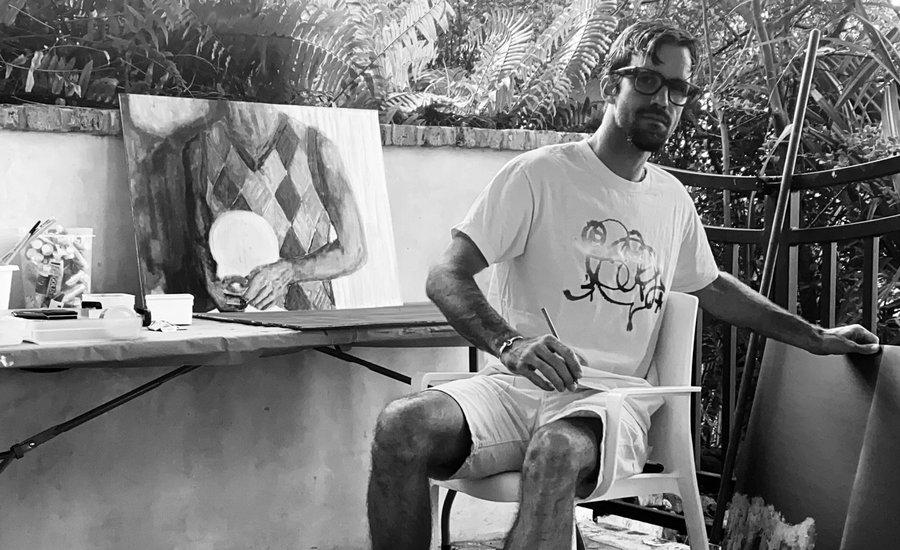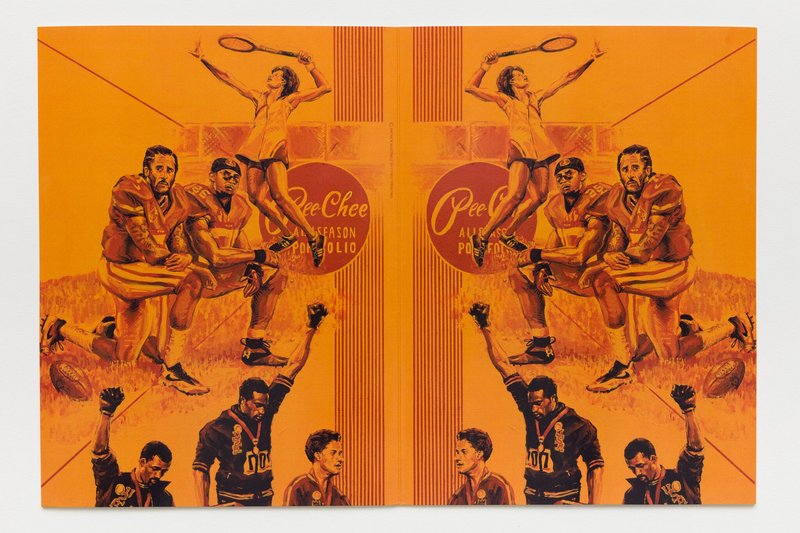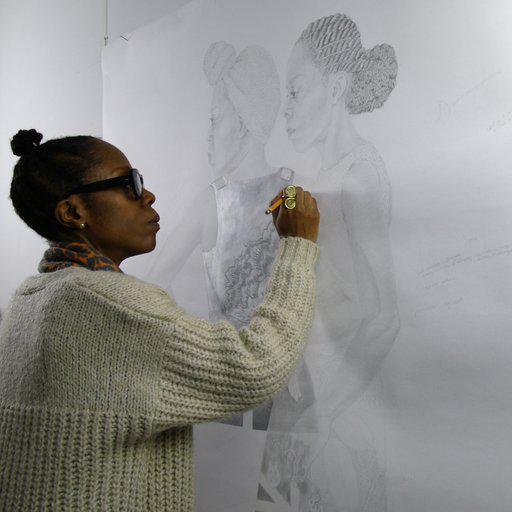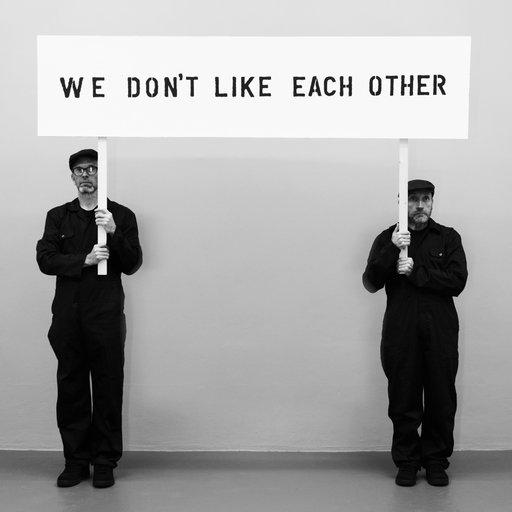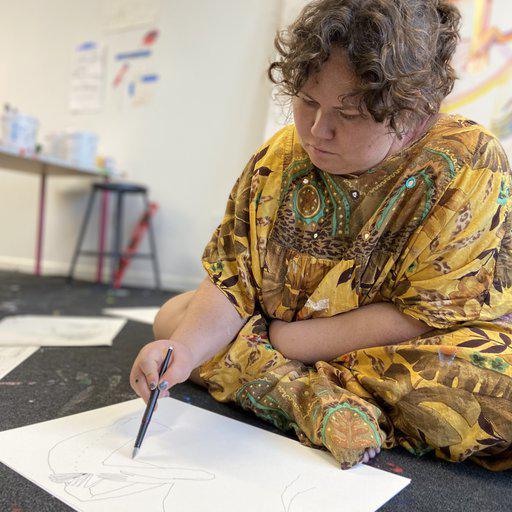When Pennsylvania-born, Brooklyn-based Kyle Thurman was an adolescent, he was advised to consider a career as a soldier or an athlete. These occupations have informed a substantial ongoing series of work, Suggested Occupation, that started at the end of 2015 with the artist making drawings in response to images of soldiers and athletes in newspapers. This almost daily drawing practice offers a reminder of the very different lives he could be leading.
In Suggested Occupation 13 (2016–18) Thurman depicts a young man wearing a bullet-proof-vest and combat trousers, seated and asleep, his hands clasped on his lap. Another figure to one side is awake, reading or looking at something in his hands, just out of sight. They might be on their way back from a military exercise or sortie. The perhaps surprising choice of a bubble-gum pink paper enhances the tenderness of the image depicted – plus nobody looks tough when they’re asleep.
This is precisely where Thurman’s critical thinking becomes evident – by extracting imagery of male figures from the original contexts in which they appear, he takes control of the narrative and sets his own scene for their redepiction and reinterpretation. How the media presents images of men, and how consumers respond to them, plays a significant role in how patriarchal and heterosexual paradigms are created, maintained or changed, and Thurman’s works, in an understated though thoughtfully conceived and executed way, unpick these male stereotypes and archetypes.
Suggested Occupation 22 (2018), for example, depicts what might be soccer players after scoring a goal – their triumphant cries are almost tribal in their masculinity, yet the hand of one man on the chest of the other, allied to the gentle clasping of the two men’s hands, could be interpreted as being decidedly homoerotic. Thurman’s drawing reinforces that these two states are not mutually exclusive.
The uncertainty of the dynamics in his drawings leave them open-ended, unresolvable. Often seemingly ‘unfinished’ in the sense that they appear like sketches, with some sections shaded or colored with pencils, pastels or markers, Thurman’s drawings capture, often at close to life-size, fleeting moments of male interaction that challenge normative ideas of masculinity.
Thurman is one of over a hundred contemporary artists featured in Vitamin D3: Today's Best in Contemporary Drawing , Phaidon's new, indispensable survey of contemporary drawing. We sat him down and asked him a few questions about how, why and when he draws.
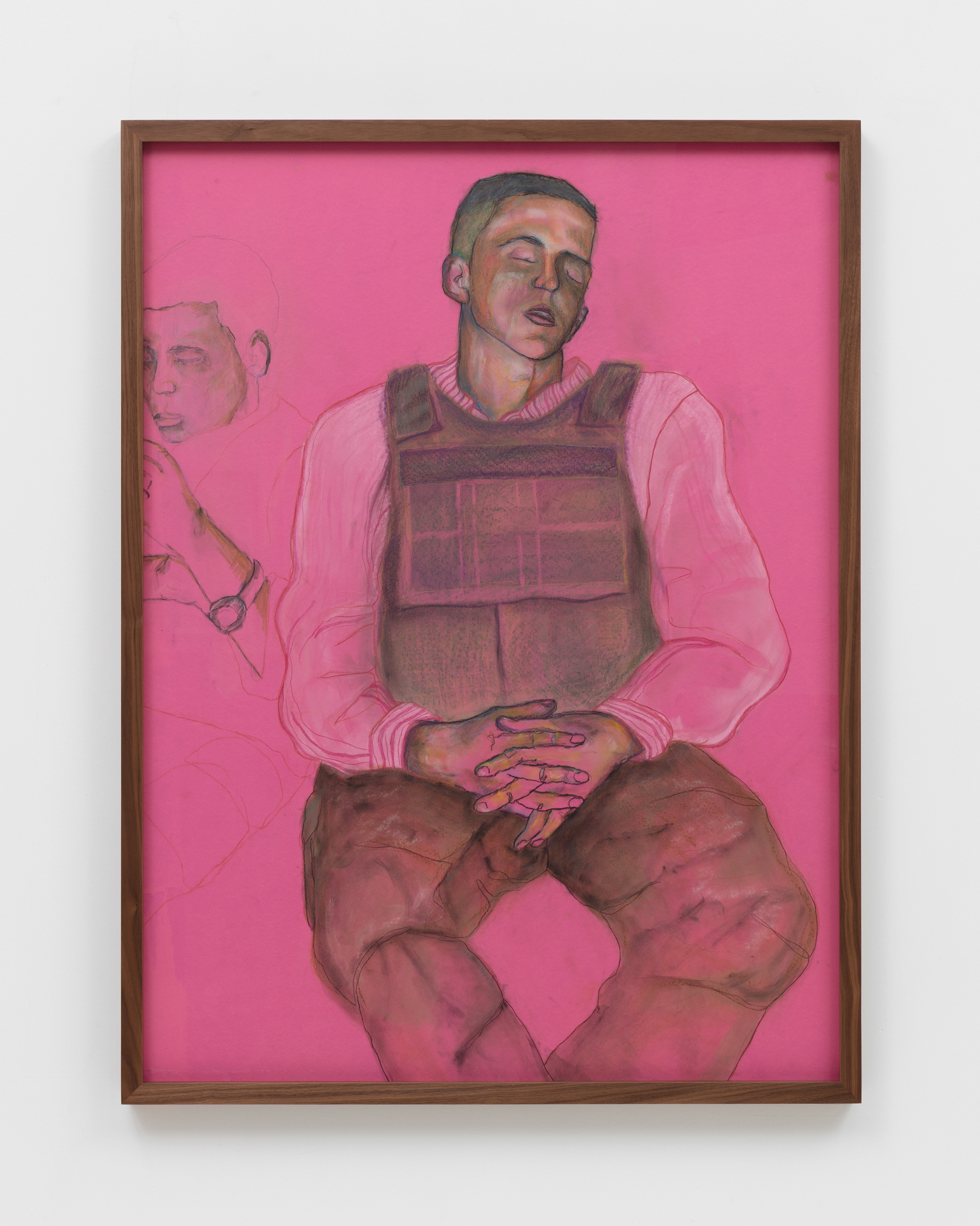 Suggested Occupation 13, 2016–18, charcoal, colored pencil, marker and pastel on seamless paper in artist’s frame, 114.3 × 86.7 × 4.5 cm (45 × 34 × 1 ¾ in)
Suggested Occupation 13, 2016–18, charcoal, colored pencil, marker and pastel on seamless paper in artist’s frame, 114.3 × 86.7 × 4.5 cm (45 × 34 × 1 ¾ in)
Who are you and what’s on your mind right now? My name is Kyle Thurman. I’m an artist who is based mostly in New York City. I’ve recently been thinking a lot about teaching and schools. What can art be in an academic setting? Are our current institutional structures the best way to share histories of artistic production? I’m a new teacher, I recently taught a graduate level Drawing Seminar - so these are urgent questions to deconstruct and reimagine during such uncertain times. I’m also thinking a lot about crowds, Morandi, choreography - and about riding my bike almost across the country to see a friend that I miss.
What’s your special relationship with drawing and how would you describe what you do? Drawing is another form of writing for me. At certain times, I draw as a way to take notes in order to remember things. Other times, I use drawing to draft longer stories.
 Installation view, ‘Whitney Biennial 2019,’ Whitney Museum of American Art, New York. Photo: Joerg Lohse
Installation view, ‘Whitney Biennial 2019,’ Whitney Museum of American Art, New York. Photo: Joerg Lohse
Why is there an increased interest in drawing right now? I’m not sure that I have a good answer for this. All art should be under constant reassessment. The visibility of certain mediums always seems to be cyclical. Drawing, along with watching movies, was always my entry point into developing an artistic practice ever since I was very young.
What are the hardest things for you to get ‘right’? I tend to resist the notion that there is a ‘right’ way to do these things. That doesn’t make it any easier to make a good drawing though.
Is the immediacy of drawing part of its appeal for you? I think of my drawings as records - records of time, records of marks, records of colors, records of events. Drawing can be both fast and slow, a way to digest an experience of the world. My drawings are simultaneously built and taken apart each time I work on them. There is no plan. Eventually they arrive at a place where nothing else needs to happen and then they enter their frame. At that point, they are both part of an archive specific to my practice and autonomous objects in the world.
 Installation view, ‘Whitney Biennial 2019,’ Whitney Museum of American Art, New York. Photo: Joerg Lohse
Installation view, ‘Whitney Biennial 2019,’ Whitney Museum of American Art, New York. Photo: Joerg Lohse
Can you explain the difference between drawing as a child, something we can all relate to, and drawing as an artist - something most of us cannot? Beyond knowing when to stop, along with certain skills or knowledge of materials acquired with age and research, I would say it’s mostly a matter of context.
What do most people overlook when they attempt to ‘assess’ drawing? I cannot speak for another person’s experience of an artwork. For myself, like any song worth listening to on repeat - or any great movie or book or building - a successful piece of art can be experienced over and over. Each time I return to a great piece of art I learn something new from it, or it asks me a new question.
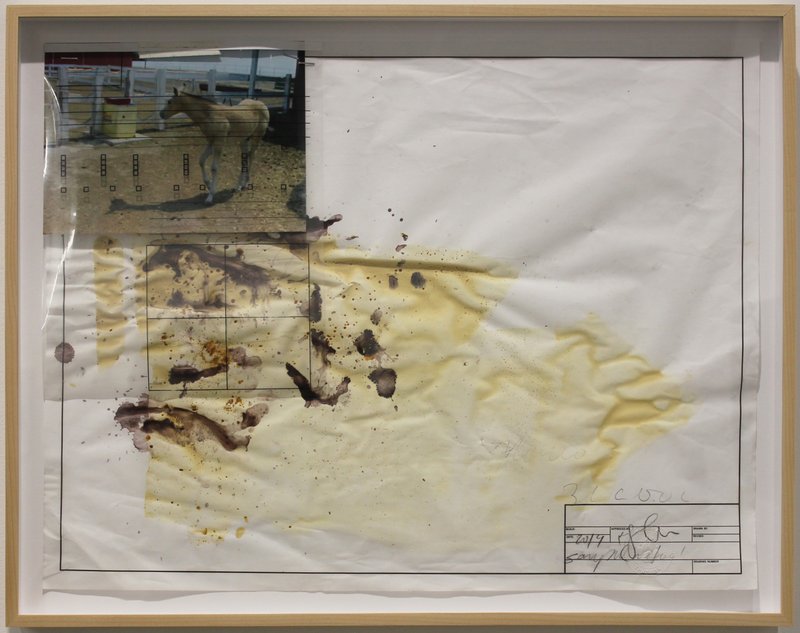 Untitled
(2014) by Kyle Thurman
Untitled
(2014) by Kyle Thurman
When do you draw and what sort of physical, spiritual, mental or geographical place do you have to be in generally for it to work? At this point, drawing is just part of my daily life. It’s become vital for my survival as both a person and an artist. Certainly my mood and place can affect what happens on the paper. When I’m in my studio there is access to a vaster set of materials, but I don’t think about drawing any differently when I’m not in my studio.
You can see more of Kyle Thurman’s work on his website, his Instagram @kyle_thurman_ and at his galleries, David Lewis , Sophie Tappeiner , and Central Fine . Meanwhile, Vitamin D3: Today's Best in Contemporary Drawing , featuring over 100 artists including: Tania Kovats, Rashid Johnson, Rebecca Salter, Toyin Ojih Odutola, Deanna Petherbridge, Christina Quarles, and Emma Talbot is available now in the store . We'll be running more interviews with artists featured in the book in the coming weeks.











